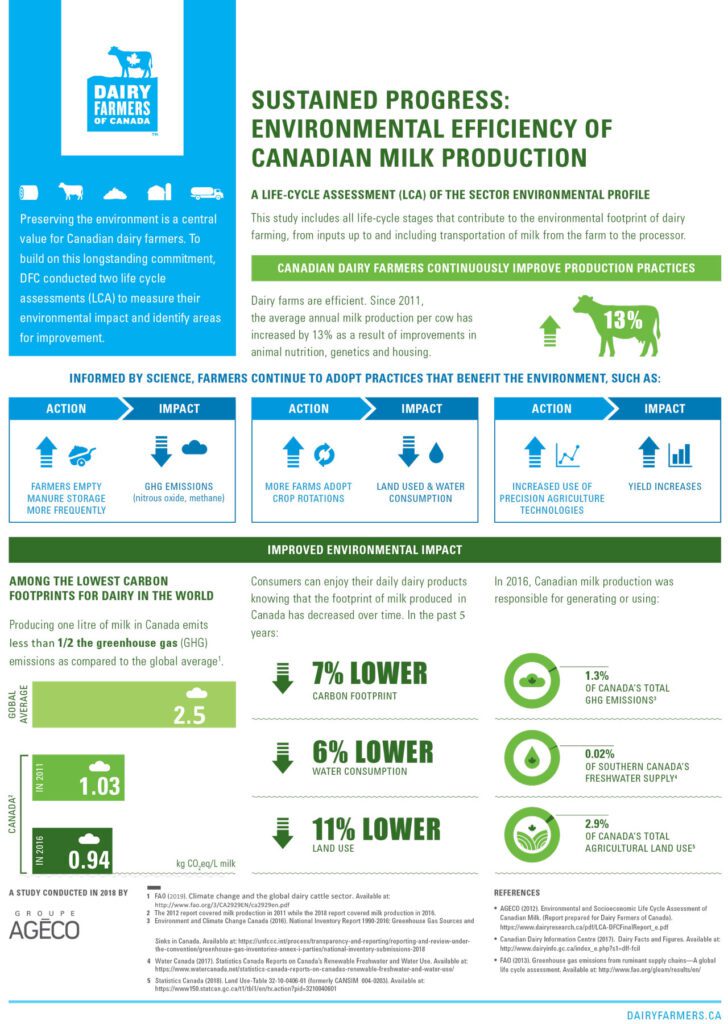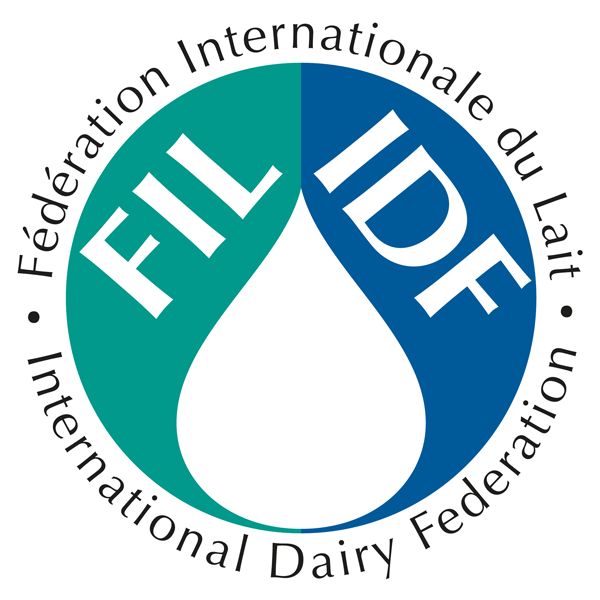Share this page
Study results reveal reduced environmental impact and efficiency of Canadian milk production
Environmental LCA of Canadian Milk Production: Comparison 2011 - 2016
Alignment with SDGs
AUTHOR
Karen Clark Dairy Farmers of Canada • Canada
Abstract
Dairy Farmers of Canada (DFC) published its first life cycle assessment (LCA) in 2012 in order to set a baseline of environmental performance for Canadian milk production. The industry has also invested heavily in research in sustainable production over many years – in, for example, animal care, genetics, forages, and greenhouse gas mitigation. In 2018, DFC undertook an update of the LCA, in part to be able to assess the level of implementation of beneficial management practices and to identify areas for continued research. This study characterizes the environmental performance of Canadian milk production in 2016 and compares it to performance in 2011. It assesses several environmental issues, including carbon footprint, water consumption, and land use.
The study highlighted areas where improvements were made, as well as areas for continued efforts.

The Canadian dairy sector has a limited impact on the country’s natural resources. Dairy farming uses 2.9% of total agricultural land and only 0.02% of what is defined as ‘southern Canada’s freshwater supply.
Karen Clark Tweet
History of success
Results indicate that environmentally friendly farm practices, including more diversified crop rotations, higher quality feed, reduced tillage and precision agriculture techniques, as well as increased milk production per cow drove improvements in environmental profiles.
carbon footprint
7% lower
per litre
water consumption
6% lower
per litre
amount of land required
11% lower
over the 5-year period






